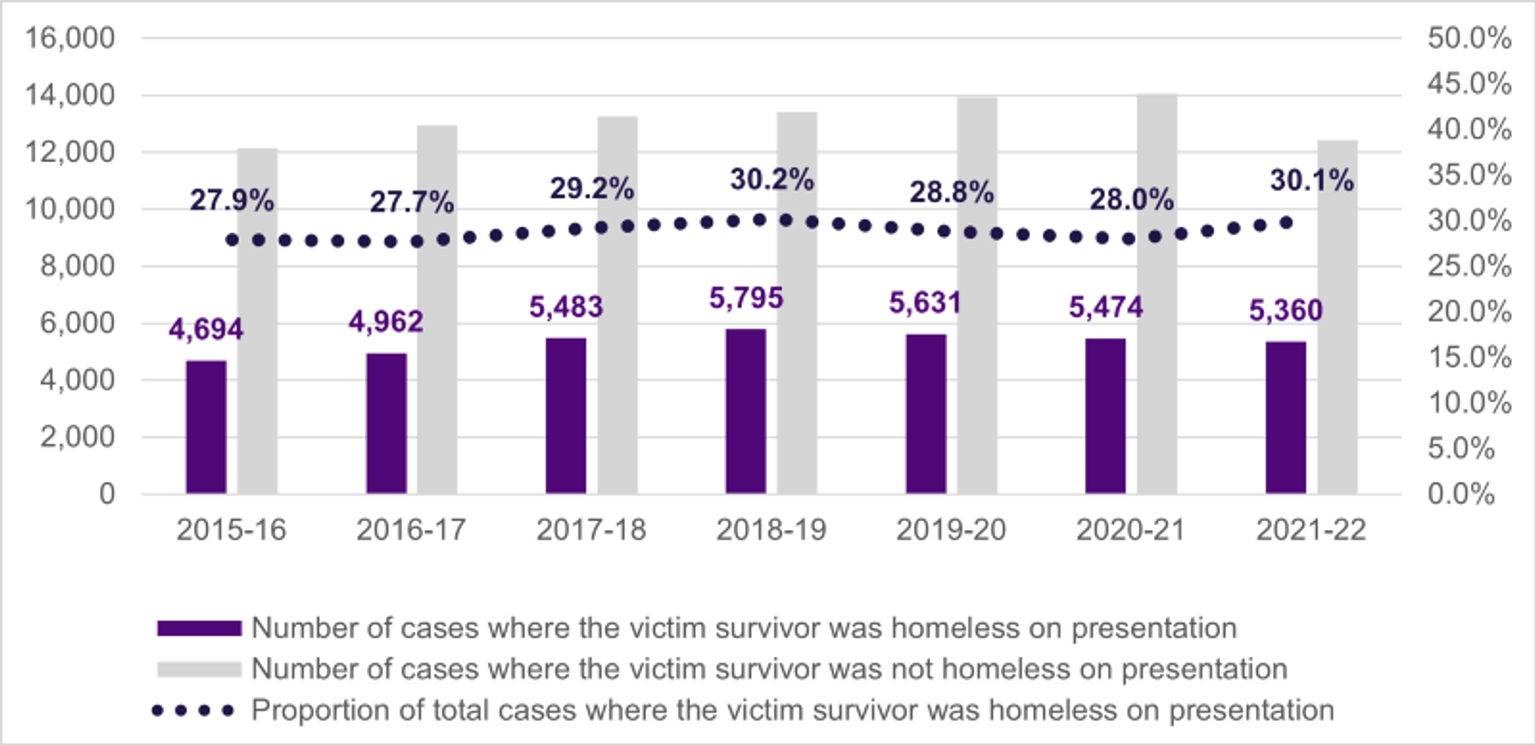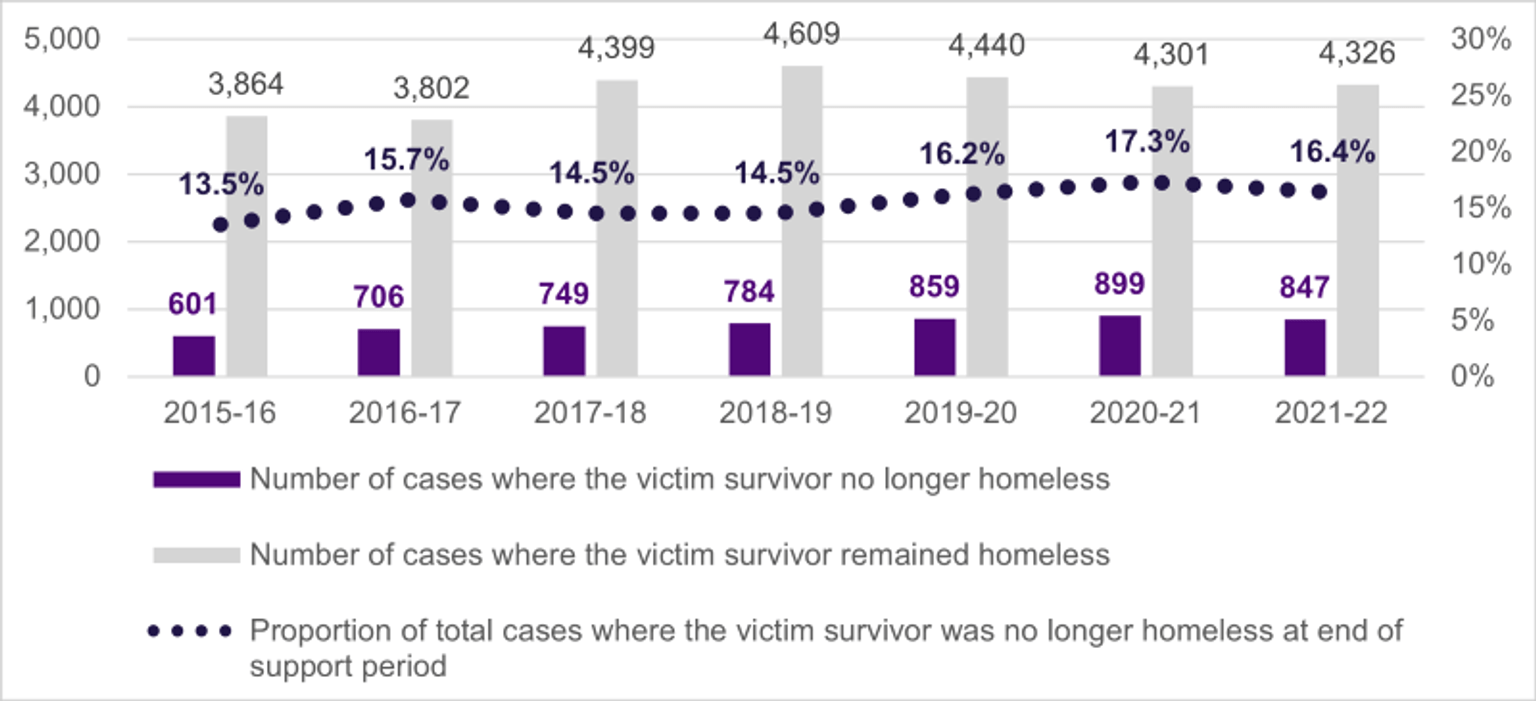Indicator: Increase in victim survivors who have safe, secure, stable and affordable housing
Family violence is recognised as a leading cause of homelessness, especially for women and children.
Homelessness can occur as a direct result of experiencing family violence when a victim survivor leaves home in crisis to seek safety from a perpetrator’s use of violence. Structural barriers including gender inequality, a lack of affordable housing, and limited social supports can also prevent victim survivors from finding a safe and secure place to live.
Measure: Number/proportion of victim survivors who are homeless or without a permanent place to live
In 2021–22, there were 5,360 family violence service cases where victim survivors identified themselves as homeless.
Data shows that clients accessing refuges make up the greatest proportion of victim survivors experiencing homelessness. In the most recent year to June 2022, almost half (48.6 per cent) of clients experiencing homelessness were in refuges. This cohort tends to be at highest risk as they are often forced to leave their homes to escape the violence.
Comparisons with earlier years should be made with caution due to a practice change in 2018–19 that altered the way some family violence agencies were recording clients up to that point.
Indicator: Increase in victim survivors who have safe, secure, stable and affordable housing
Measure: Number/proportion of victim survivors who experience an improvement in their housing situation after receiving a service
In 2021–22, there were 847 family violence service cases where victim survivors were no longer homeless at the end of their support period. In the same year, there were 4,326 cases where a victim survivor remained homeless.
Each year, over 80 per cent of family violence service cases with victim survivors who indicated homelessness on presentation, remained homeless when their support period ended.
In the most recent year to June 2022, the number of cases where the client was no longer homeless at the end of the support period decreased compared to the previous year.
Comparisons with earlier years should be made with caution due to a practice change in 2018–19 that altered the way some family violence agencies were recording clients up to that point.
Updated

